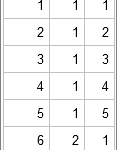
If you write an n x p matrix from PROC IML to a SAS data set, you'll get a data set with n rows and p columns. For some applications, it is more convenient to write the matrix in a "long format" with np observations and three columns. The first

If you write an n x p matrix from PROC IML to a SAS data set, you'll get a data set with n rows and p columns. For some applications, it is more convenient to write the matrix in a "long format" with np observations and three columns. The first
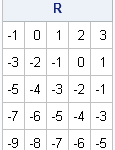
In using a vector-matrix language such as SAS/IML, MATLAB, or R, one of the challenges for programmers is learning how to vectorize computations. Often it is not intuitive how to program a computation so that you avoid looping over the rows and columns of a matrix. However, there are a

My daughter's middle school math class recently reviewed how to compute the greatest common factor (GCF) and the least common multiple (LCM) of a set of integers. (The GCF is sometimes called the greatest common divisor, or GCD.) Both algorithms require factoring integers into a product of primes. While helping

I was looking at someone else's SAS/IML program when I saw this line of code: y = sqrt(x<>0); The statement uses the element maximum operator (<>) in the SAS/IML language to make sure that negative value are never passed to the square root function. This little trick is a real
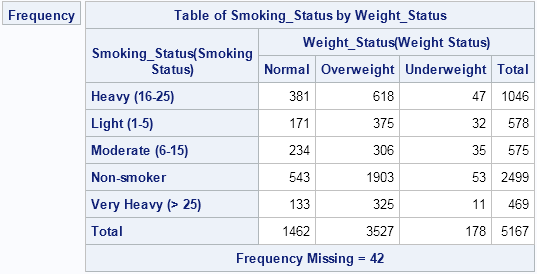
If you've ever tried to use PROC FREQ to create a frequency table of two character variables, you know that by default the categories for each variable are displayed in alphabetical order. A different order is sometimes more useful. For example, consider the following two-way table for the smoking status

SAS/IML programmers know that the VECDIAG matrix can be used to extract the diagonal elements of a matrix. For example, the following statements extract the diagonal of a 3 x 3 matrix: proc iml; m = {1 2 3, 4 5 6, 7 8 9}; v = vecdiag(m); /* v = {1,5,9}
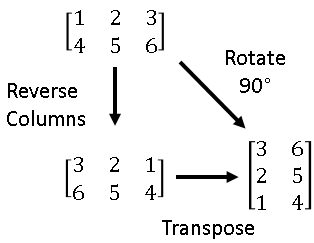
This article is about rotating matrices. No, I don't mean "rotation matrices," I mean rotating matrices. As in turning a matrix 90 degrees in a clockwise or counterclockwise direction. I was reading a program written in MATLAB in which the programmer used a MATLAB function called ROT90, which rotates a

What is the best way to share SAS/IML functions with your colleagues? Give them the source code? Create a function library that they can use? This article describes three techniques that make your SAS/IML functions accessible to others. As background, remember that you can define new functions and subroutines in

Last week I described how to generate permutations in SAS. A related concept is the "combination." In probability and statistics, a combination is a subset of k items chosen from a set that contains N items. Order does not matter, so although the ordered triplets (B, A, C) and (C,
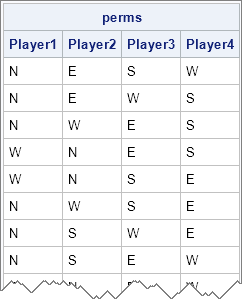
I've written several articles that show how to generate permutations in SAS. In the SAS DATA step, you can use the ALLPEM subroutine to generate all permutations of a DATA step array that contain a small number (18 or fewer) elements. In addition, the PLAN procedure enables you to generate
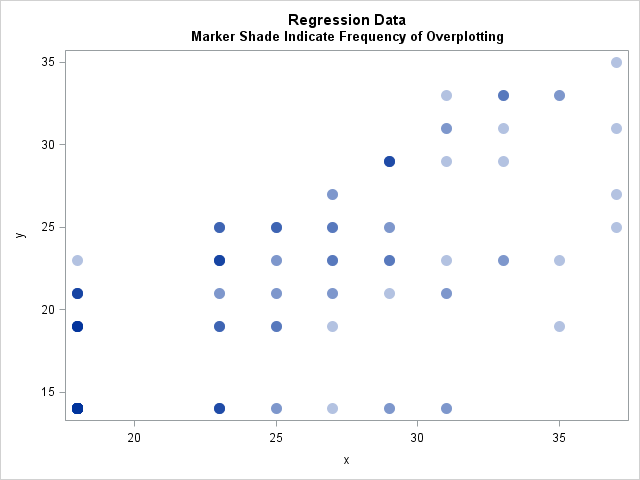
This week I read an interesting blog post that led to a discussion about specifying the frequencies of observations in a regression model. In SAS software, many of the analysis procedures contain a FREQ statement for specifying frequencies and a WEIGHT statement for specifying weights in a weighted regression. Theis

Sometimes it is useful in the SAS/IML language to convert a character string into a vector of one-character values. For example, you might want to count the frequency distribution of characters, which is easy when each character is an element of a vector. The question of how to convert a
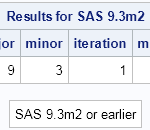
Recently I wrote about how to determine the age of your SAS release. Experienced SAS programmers know that you can programatically determine information about your SAS release by using certain automatic macro variables that SAS provides: SYSVER: contains the major and minor version of the SAS release SYSVLONG: contains the

Even the best programmers make mistakes. For most errors, SAS software displays the nature and location of the error, returns control to the programmer, and awaits further instructions. However, there are a handful of insidious errors that cause SAS to think that a statement or program is not finished. For
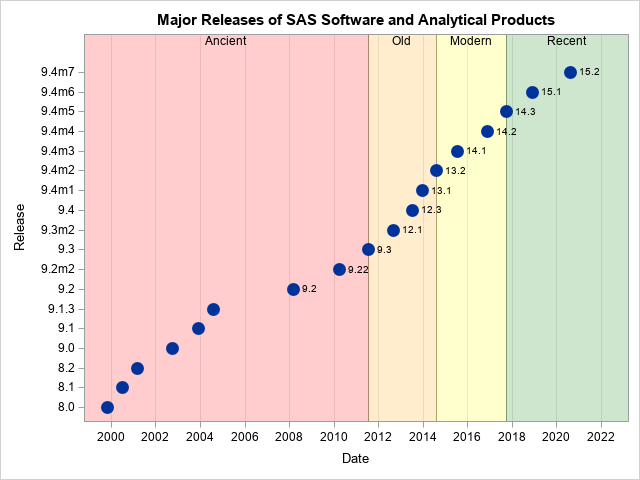
How old is your version of SAS software? The graph on the left shows the release dates for various releases of SAS software, beginning with SAS 8.0. The graph is based on a graph on Jiangtang Hu's blog that shows the major SAS releases up through the initial release of

One of my favorite features of SAS/IML 12.1 (released with 9.3m2) is that the USE and CLOSE statements support reading data set names that are specified in a SAS/IML matrix. The IMLPlus language in SAS/IML Studio has supported this syntax since the early 2000s, so I am pleased that this
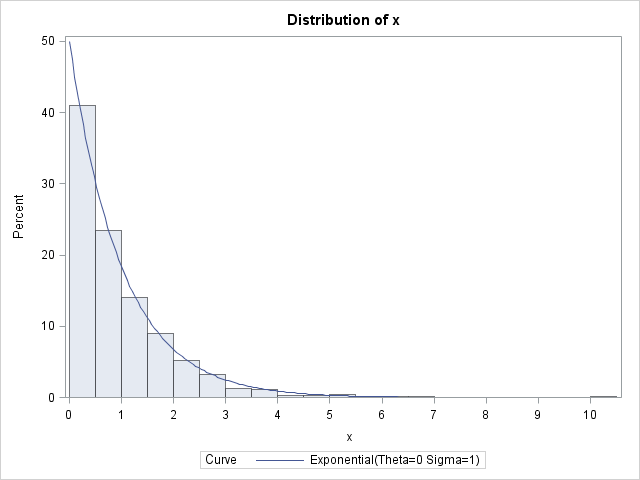
There are many techniques for generating random variates from a specified probability distribution such as the normal, exponential, or gamma distribution. However, one technique stands out because of its generality and simplicity: the inverse CDF sampling technique. If you know the cumulative distribution function (CDF) of a probability distribution, then
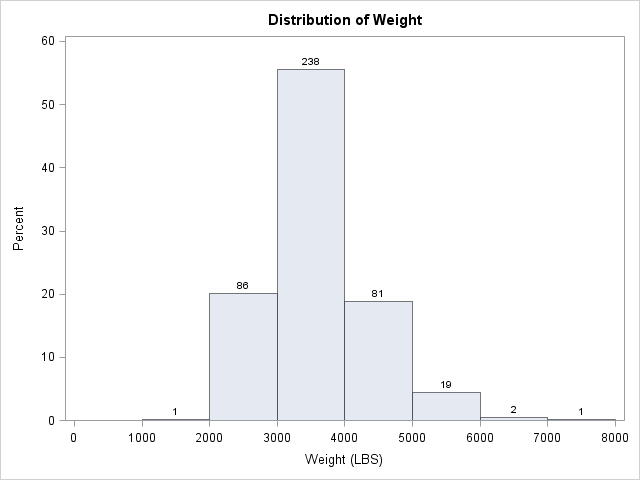
It is often useful to partition observations for a continuous variable into a small number of intervals, called bins. This familiar process occurs every time that you create a histogram, such as the one on the left. In SAS you can create this histogram by calling the UNIVARIATE procedure. Optionally,

Every programming language has an IF-THEN statement that branches according to whether a Boolean expression is true or false. In SAS, the IF-THEN (or IF-THEN/ELSE) statement evaluates an expression and braches according to whether the expression is nonzero (true) or zero (false). The basic syntax is if numeric-expression then do-computation;

On the Web site for the book Statistical Programming with SAS/IML Software, I provide instructions on how to download the sample data sets and install them so that they can be used from within SAS/IML Studio. When I wrote the book I did not anticipate that SAS users might want

A SAS user told me that he computed a vector of values in the SAS/IML language and wanted to use those values on a statement in a SAS procedure. The particular application involved wanting to use the values on the ESTIMATE and CONTRAST statements in a SAS regression procedure, but

For programmers who are learning the SAS/IML language, it is sometimes confusing that there are two kinds of multiplication operators, whereas in the SAS DATA step there is only scalar multiplication. This article describes the multiplication operators in the SAS/IML language and how to use them to perform common tasks

The SAS/IML language has a curious syntax that enables you to specify a "repetition factor" when you initialize a vector of literal values. Essentially, the language enables you to specify the frequency of an element. For example, suppose you want to define the following vector: proc iml; x = {1

Suppose that you have a SAS/IML matrix and you want to set each element of a submatrix to zero (or any other value). There is a simple syntax that accomplishes this task. If you subscript a matrix and do not specify a row, it means "use all rows." So, for

If you are like me, you've experienced the following frustration. You are reading the SAS/STAT documentation, trying to understand some procedure or option, when you find an example that is very similar to what you need. "Great," you think, "this example will help me understand how the SAS procedure works!"
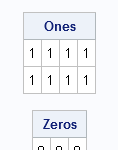
In linear algebra, the I symbol is used to denote an n x n identity matrix. The symbol J (or sometimes 1) is used to denote an n x p matrix of ones. When the SAS/IML language was implemented, the I function was defined to generate the identity matrix. The J function was defined

I wanted to write a blog post about the "Table distribution" in SAS. The Table distribution, which is supported by the RAND and the RANDGEN function, enables you to specify the probability of selecting each of k items. Therefore you can use the Table distribution to sample, with replacement, from

The SAS/IML language secretly creates temporary variables. Most of the time programmers aren't even aware that the language does this. However, there is one situation where if you don't think carefully about temporary variables, your program will silently produce an error. And as every programmer knows, silent wrong numbers are
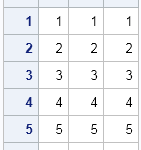
I like to be efficient in my SAS/IML programs, but sometimes I get into bad habits. Recently I realized that I was reshaping a bunch of SAS/IML row vectors because I wanted to write them to a SAS data set. This is completely unnecessary! The SAS/IML language will create a

A SAS/IML user on a discussion forum was trying to read data into a SAS/IML matrix, but the data was so large that it would not fit into memory. (Recall that SAS/IML matrices are kept in RAM.) After a few questions, it turned out that the user was trying to